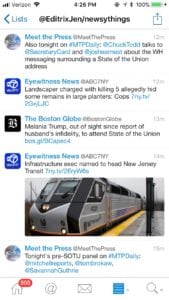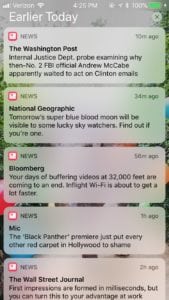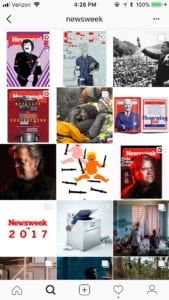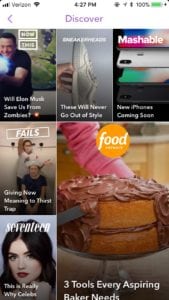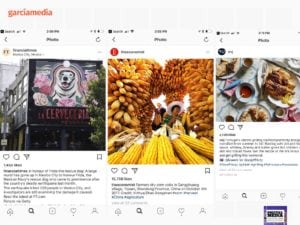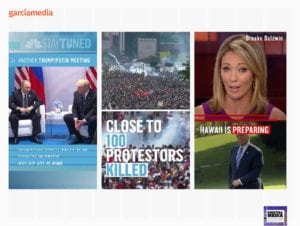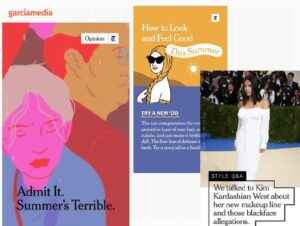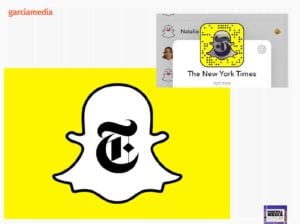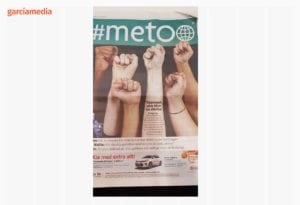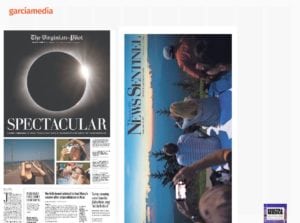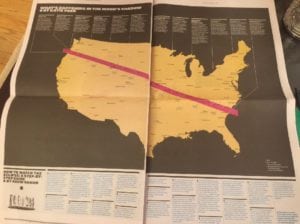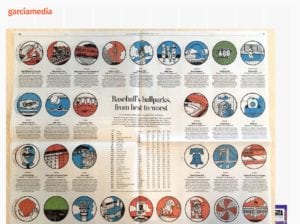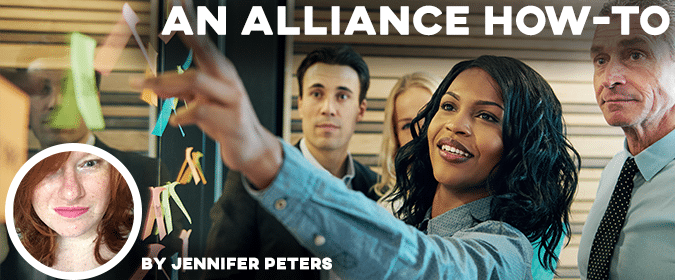
I get most of my news from my iPhone. I still subscribe to print newspapers, but in a 24/7 news cycle, I almost never get breaking news from the print paper. Between the news alerts, social media, daily news podcasts, and my friends texting me about the latest news that’s struck their fancy, I spend more time than I’d care to admit staring at a 4.7-inch screen to learn about my 197-million-square-mile world. And I like it.
So why aren’t all news outlets already giving us our news this way? Familiarity. Chances are, publications are used to doing things a certain way and are trying to keep doing things that way. I get it. I had a Kindle for five years before I started using it regularly, and it was strange to me for that first year of regular use. However, I got used to it and realized how much better my reading experience was. I still read paperbacks and hardcovers, but when I want to read some trashy fiction or just don’t want to carry a 1,200-page book around on the metro, my Kindle lets me do that without effort. The same is true of digital strategy for news. You don’t have to give up your print product and devote yourself to all digital, all the time. Print news is still important to many people, but it’s not the only way to get news anymore, and denying that is hurting your readership and your bottom line.
To help you start honing your own digital strategy, I spoke with Dr. Mario García, a professor at Columbia University focused on news design, about what your outlet can be doing and how to get the ball rolling when it comes to better using both components of your news delivery system.
Start at the Top
You can’t develop a solid digital-first strategy if you’re not given the freedom to do so, which is why García says the mandate needs to come from the top. Publishers need to give their newsrooms the space to adapt to technological and storytelling advances that may seem counter to how things have been done in the past.
To do this, García suggests you “forget rank and hierarchy” of your newsroom. Younger editors, he says, likely know more about the digital landscape and can help older editors figure out the best way to produce quality digital journalism, while more veteran editors may have a better handle on what’s possible with print.
Get Out of Your Own Way
“I believe that editors are smart enough to understand, intellectually, that nobody’s waiting for a printed edition of his paper for breaking news,” García says. “People of all ages are getting their information through other platforms, primarily their phone, online, tablets, whatever. But there is also an emotional side to this where editors of a certain age have these romances with print.”
Editors, García says, are still thinking of the printed front page when they think about breaking news. They’re thinking about the big, bold headline printed across a tabloid-size page. But in 2018, no one is getting their news from the front page – not really. By the time your front page hits newsstands, the majority of your readers have already heard about the lead story. They may not know all the details yet, but they get the gist. By still presenting your front page to them as if you’re sharing the newest information there, you’re ignoring the routines and preferences of your readers.
Consider Social Media Your New Front Page
Instead of focusing on the front page, García says, you need to be breaking news on social media and online. “Think of the smallest platform first and go from there,” he suggests. That could mean breaking a story on social media and tweeting out the breaking story immediately before building the story across your other delivery platforms, including print.
As an example, García notes that The Washington Post broke the news about the Texas church massacre last fall on Twitter, then added to an online story before putting together a second-day story for their print edition the next morning.
Even if you’re not dealing with national news, though, chances are your readers will know something about a story before it lands on the front page the next morning — unless you have one of those late-night “Stop the presses!” moments we’ve all seen in the movies. That’s why García says to treat every print news story as a second-day story, even if it’s the first time you’re running that story in the paper.
Think of the News as a Multi-Course Meal
When you have a meal, García says, you don’t serve the main course before you serve the appetizers, and news should be treated the same way. While it may be easier to think of breaking news as one big story, that would be impractical and disregards how news is consumed. People want the news as it happens — they’re not going to ignore the information coming at them in hopes that you’ll print it the next morning. So you need to be offering up tastes, from the moment they learn about a story until they sit down to devour the big story.
You’ll be able to reach a large audience with a snippet of a story if you share it through social media or a smartphone news alert. Once they’ve sampled that, they’ll want more, so you should have an online story to update them as the day goes on, and then a follow-up print piece that advances the story in some way.
Forget About Print, at Least for a Moment
García says moving to a digital-first method of storytelling is easiest if you can forget about your print product while plotting coverage. In workshops he’s run, he says participants have a much easier time devising a digital strategy for breaking news if they can imagine that they don’t have a newspaper at all. When there is no other option, people will learn to work with what’s available to them.
Find a New Use for Print
Print may be a bad fit for breaking news, García says, but that doesn’t mean it’s irrelevant. Quite the opposite, in fact. “In many of these regional and local areas, print is the cash cow,” García says. But you need to redefine the role of print if you want it to remain valuable to readers.
Your print edition can be the first home for enterprise reporting and big investigations, stories that are original to your publication and that your readers haven’t heard about prior to your reporting. In those instances, you can be print-first and follow on with a digital version of the story.
Print is also an exceptional way to present large images. You may be able to have interactive components online, but for some stories, a large newsprint-sized graphic is ideal, and you can’t achieve the same impact on a small iPhone screen, or even on a computer screen. Instead, you should save those images for print, where people can really appreciate the size and scope of the work, whether it’s a photo, illustration or graph.
Think Like a News Magazine
When print was king, newspapers would break news daily, while news magazines would offer analysis and context each week. These days, Garcia says the successful papers are beginning to treat their print coverage the way news magazines treat theirs. That means more newspaper headlines that ask questions — “How Does X Breaking News Item Affect You?” — or offering solutions — “Why You Should Do X Because of Y Breaking News Item.”
When the Dow Jones Industrial Average hit 20,000 for the first time, many publications led with the news, but the smart ones, García said, went further. At The New York Times, that meant asking Now What?, while The Washington Post opted to explain how the Dow got to that point and USA TODAY discussed whether you should invest. Why does that matter? Because people can learn from a single sentence that the Dow has hit a new record. What they need from journalists is why that single sentence matters and what it means for them.
Accept the New Flow of News
In 2018, news doesn’t break once a day. People aren’t getting their news only from a print paper or their evening news broadcast. Now, the news breaks every hour, sometimes every 15 minutes. That means publishers need to allow their newsrooms to operate at the same speed as the news.
Your newsroom should have someone designated during every shift to be the person responsible for dealing with breaking news, García says. There should be one person who, when a story breaks, shares the news on social media and then follows the story to its conclusion.
The Washington Post using Twitter to break the story of the Texas church shooting last fall is a great example of how this plays out, García says.
“You didn’t even have headlines or a regular lead for this story; you have tweets with whatever little they knew. But 12 minutes later, you already have the beginning of a traditional storyline — on the phone,” he explains. “And then you had snippets of [that story] till the next day, [when the story was published in print]. But it was an exercise to see that they were in control of a story from the get-go.”
If your outlet has recently developed a digital-first strategy, we want to know what the process was like for you. And if you haven’t, tell us what’s holding you back. You can reach out via email to jennifer@newsmediaalliance.org or tweet @EditrixJen. And if you have other areas of the news business you’d like to know more about, let us know and it may become a future How-To article.

